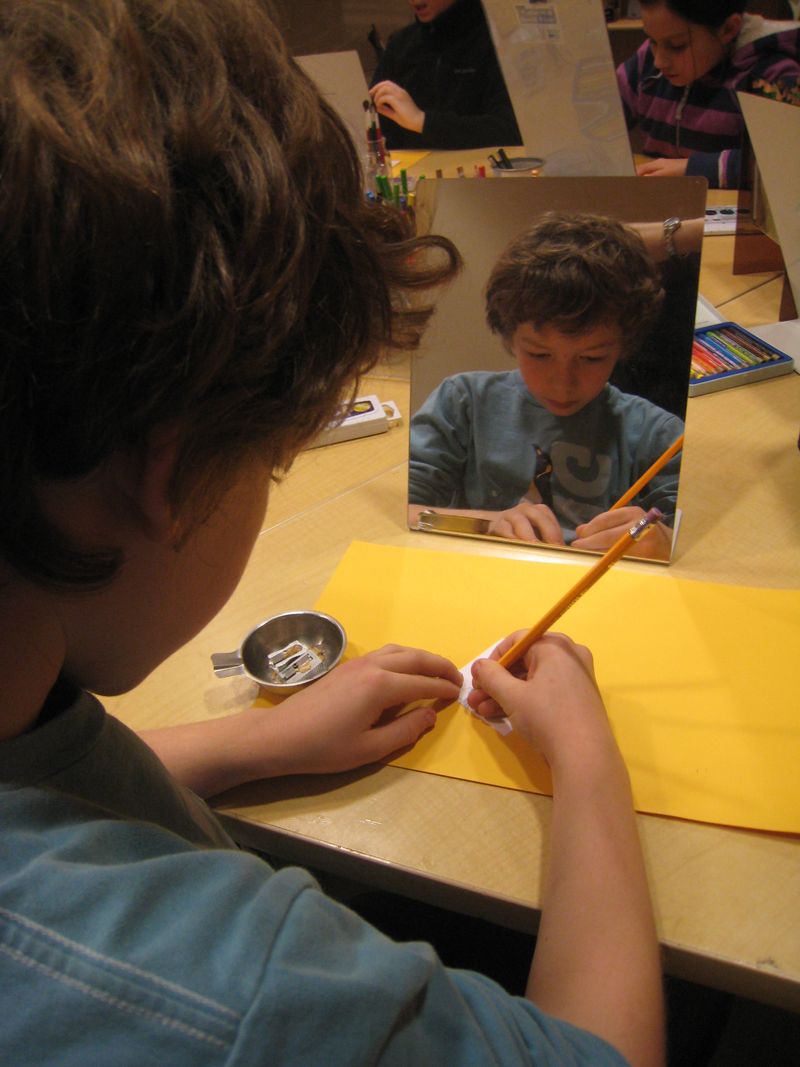Six Word Memoirs, Treasure Windows, and Gifts to the Community

Just before winter break, Opal 3 did a genre study in Literacy Studio on Six Word Memoirs. The idea of a six word memoir is that an author tells the reader about a significant memory from his or her own life in exactly six words.
According to I Can’t Keep my own Secrets: Six-Word Memoirs by Teens Famous and Obscure edited by Smith Magazine:
The idea of telling an entire story in half a dozen words dates back to Ernest Hemingway. Legend has it that this great American writer was once challenged to write a whole novel in just six words. He came back with “For sale: baby shoes, never worn.”
The students spent a few weeks immersed in six word memoirs – reading them, writing them, and playing with them.
Writers were inspired by four different prompts through the study:
- An artifact, an object that holds personal memories
- A person who inspires significant memories for you
- A place where meaningful events took place
- Your internal gift that you share with your community
Carole, our arts specialist, told us that as listened to the students and I construct our ideas of what a six word memoir is and what an author would do to craft a compelling six word memoir, the image of a window was very powerful for her. She said that these memoirs were a window into each of us –a glimpse into memories that make us who we are. This inspired her to create the “Treasure Windows” on which our final six word memoirs are mounted.
And since these Treasure Windows give the reader a glimpse into each of us, the students created self portraits for their centers – a visual image of who they are.
How can Opal 3 students revisit and rethink the idea of an internal gift?
It is a long standing Opal School tradition for our students to discover, document and share the gift that each of them brings to their school community. We were wondering if the oldest students in the school might consider this idea of an internal gift differently.
We read a book called Melissa Parkington’s Beautiful, Beautiful Hair by Pat Brisson. Melissa is a girl who is known for her beautiful hair, and everyone she met would tell her how beautiful it was. One day Melissa realizes that when she “was younger, hearing those things made her feel special. But lately, it had begun to bother her. She wanted people to notice her for something she did, not something that just grew out of her head.” Eventually, as Melissa tries out new activities, she realizes that the gift she gives other people is the gift of kindness. The final act of kindness described in the book is Melissa donating her hair to a charity that will turn it into wigs for children who need them.
We talked as a community about this idea of an internal gift. Like Melissa, we knew it had to be something you do, but what else makes it a gift?
In our discussion, the children realized that for it to be a gift you have to give it to people; that it’s what people love about you. Like if you go to summer camp and you help people meet each other and make new friends, you are giving a gift. What would we call that? Or if you always help people who are sad or hurt, what is that gift that you give?
We wondered about when people tell you, “You are a gifted dancer or a gifted artist.” Is that a gift? We wondered if this was a gift that you maybe have, but unless you share it somehow with others, it doesn’t fit the definition of internal gift that we wanted to use.
The students got to do some reflecting in class about their classmates’ gifts. They got to tell each other (by writing on a piece of paper taped to their backs) what internal gifts they had received from each of them. Then they had a similar discussion with their families.
The process of telling a story with only six words led to some amazing discoveries. For example, words like then, the, and, a and an are not really necessary. They take up a valuable word spot! And, as Riley said, “It's so cool when you get to use as much punctuation as you want. Punctuation says a lot!”
Also, playing with our words (and punctuation) was fun. Each student wrote out their word choices onto small pieces of paper and moved them around (with as much punctuation as they wanted!) until they literally crafted the six word memoir that best told their story.
My favorite part of the process was the fact that, somehow, I got to have a one on one teacher conference with every student in the class. In those precious meetings, your children shared stories of their significant memories with me, and explained and revised the six word memoirs they had written. In these moments I so appreciate how open we can be with each other, and I remember what fuels me as a teacher and as a member of the Opal community — truly connecting, especially through stories.
When we got back from break we had a ceremony to present our gifts and our Treasure Windows to the class. One by one the students received their Treasure Window and then read the six word memoir they had written about their gift to the class. The Treasure Windows are now hanging on these beautiful ribbons in a window in our classroom.








Wow! I am dying to come in a read some of these 6 word memoirs and to hear how carefully the children chose their words. It sounds like a powerful experience for everyone!